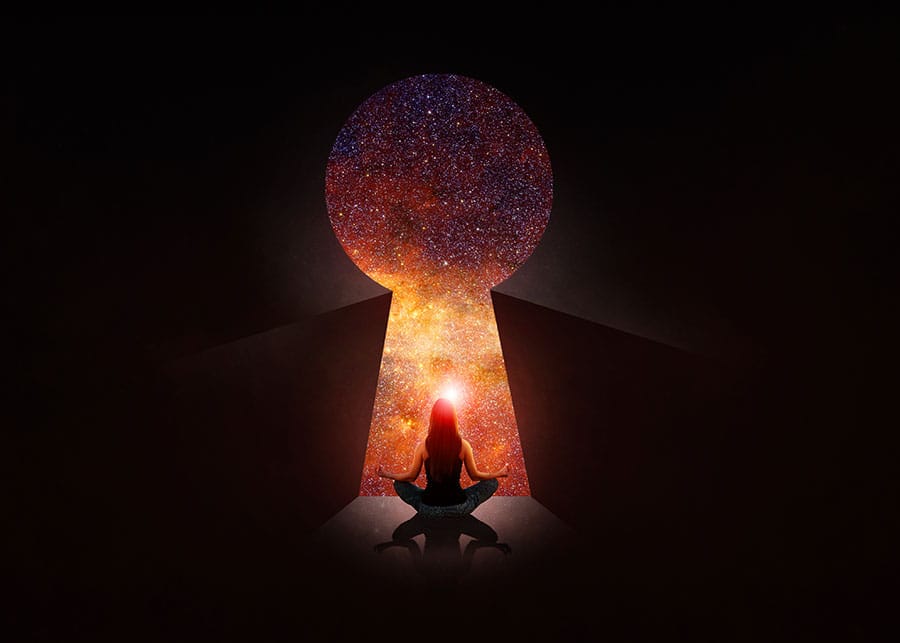
COMING SOON!

COMING SOON!

Paul is a spiritual healer and coach with more than 30 years of experience. He is the founder of The Shankara Experience, and creator of The Shankara Oracle and The Personality Cards.
His work is focused on guiding seekers to inner freedom and awakening.
Most of us entered this life in a medical facility, surrounded mostly by strangers. When we came into the world, we were hopefully welcomed, fed, and soon loved. As we’ve meandered through this life, we’ve adopted religions, societal paradigms, and habits that have been either helpful to us or not-so-helpful. Yet, even though we are entrenched in ideas and behaviors that we learned from others, it doesn’t mean that we’re done growing. In fact, at any moment we can free ourselves from the clenches of outdated thinking, limiting ideologies, and undesirable relationships. We can ALWAYS set ourselves free, and achieve rebirth: free from harm, free from bondage, free from temporary self-identities that keep us caged.
To confront who we are and where we’re going, we must first be honest with ourselves. If we can be truthful with regard to our limitations and make note of the aspects of our lives that have never worked for us, we can certainly imagine and pursue their opposites.
To begin your journey to a freedom-oriented wholeness and achieve rebirth, we must first let go of the past and realize that it is nothing but a canceled check. It’s an illusion that we somehow learned to cherish. Even when it’s painful, we still cherish the past. We might even obsess about it, which can lead to a life of regret and unfulfilled potential.
You’re better than that – and you know it!

One of the most important skills we can develop in this life is to find pathways to positivity, even when we’re entrenched in sadness, anger, or darkness. When we allow our minds to perseverate and obsess over bad experiences, we build mental muscles that will only lead to our unhappiness. When we find ways to trigger ourselves out of these bad habits, we recondition our minds. With clear minds and hearts, we can move more efficiently and happily through our lives and achieve rebirth. If we’re committed to these types of processes, we can also become completely, 100%, mentally, emotionally, and spiritually FREE.
If you need further guidance towards rebirth, I’d love to speak with you about your journey through my coaching services.

Paul is a spiritual healer and coach with more than 30 years of experience. He is the founder of The Shankara Experience, and creator of The Shankara Oracle and The Personality Cards.
His work is focused on guiding seekers to inner freedom and awakening.

Last updated: Aug. 15, 2025
It all sounds cliché: “Let’s free ourselves!” “Be Happy Now!” “There are no excuses – just do it!” It’s true, these ideas are now very popular. Almost everyone on the planet has heard these taglines from somewhere. They’re so popular that we’ve become immune to them.
Too often we accept defeat before our prime and give up on ourselves. Taking action to embody these ideas about happiness, freedom and empowerment is challenging.
We’re so busy living in the past instead of the present moment, we haven’t space within our minds and hearts to imagine something miraculously positive for ourselves in the future. You can change all that with mindful practices!
Here’s the reality: You can free yourself from limiting beliefs, thoughts, feelings, and habits. You can be happy when you choose to be happy.
It all depends on how much you are willing to release your current intentions, attitudes, and addictions – and to learn new ways. When I say addiction, I’m not referring to substances, which are also problematic. I’m referring to the chemicals that arise from specific self-negating thoughts and behaviors. Yes, we can and tend to be addicted to our own thoughts, emotions and behaviours.
To open your mind and excel at being free, clear, and positive, there are many things we can do. Here is a list of seven mindful practices for daily life that many people have incorporated into their lives and saw success. Each one of them is powerful all by itself. If you can invite all seven of these things into your life as habits, you’ll be further along than 99% of Planet Earth.
Let’s get to it with these mindful practices to learn how to live in the present moment!

Allow yourself to think lovingly of the people who have hurt you. Remember that it’s okay to make mistakes, even huge ones. There is no other way to truly embody a new piece of knowledge. We must allow ourselves to make mistakes and forgive them. Acknowledge them, endeavor to do better next time, and move on! Everybody will adjust.
If you cannot claim your gifts, beauty, and magic, who else will? Yes, our moms love us, but they love us because they want us to love ourselves. When we appreciate our best attributes, we love ourselves, we honor our births in this world, and we pay tribute to our mothers. Doing all this as part of our mindful practices, we reduce the barriers that prevent our futures from unfolding.
It does not exist, except in the dark corners of your mind. We love to think about the things that occurred in the past, even things that never happened. Truth be told, no matter what the memory is, our minds have already polluted it. After 5 years, most of our memories contain only 20-50% of the actual events. During those 5 years, our little brains conjure ideas to validate our contrived self-concepts. If our memories were stocks, they’d never produce any dividends. Let them go. Stop replaying the past in your mind. Be here, right now, in the present moment.
If we cannot get a solid handle on how wonderful you are, it’s vital that you create a plan and celebrate every small step. By doing this, you’ll get in the habit of appreciating yourself, which is required to move forward and free yourself. Make celebrating victories part of your mindful practices.
By meditating, we release self-limiting thoughts and feelings. When we clear our minds and hearts of energy and activity, we create more space for ourselves to grow. Khalil Gibran said, “Out of the well our sorrows dig, flows joy.” Breathe in white light, exhale. Focus on your inhale and exhale. Do this for 10 minutes in the morning and 10 minutes at night. It’s as simple as that.
Whether it’s volunteering at a charity event, taking care of your aging family members, serving a local homeless shelter, or donating to a Native American community, giving works! It will help you get over yourself for a moment, and it can fill your heart with love and joy. Selfless service is the highest calling on Planet Earth.
Live in gratitude every minute of every day. Too many people complain about every little thing in their lives. From how their mail is placed in their mailboxes to bad customer service, too many people get caught up in the details rather than the gratitude. It’s petty and small-minded. When we consider the remarkable number of wonderful things and people in our lives, we release our negativity. When we release negativity and live in gratitude, you’ll open your mind and it’s remarkable what the Universe will bring to us. Celebrate small victories in life. Stay humble. Be grateful. Always!
Remember that millions of people have less than you. Millions. Remember that you are the embodiment of light. If you didn’t know it, let me tell you: you are made of stardust, and you are part of an ever-expanding Universe. Don’t play the small game. Play the big game. Get out of your own way, practice the 7 steps of mindful practices, and decide to free yourself from the past. It’s time to open your mind and grow!
Looking for more guidance in opening your mind? Book a private intuitive reading session.
Q1: What does it mean to live in the present moment?
It means letting go of past memories that cloud your mind and instead focusing fully on the here and now. As the article says, our memories are often distorted over time – being present frees us from outdated stories.
Q2: Why is forgiving yourself and others important?
Continual forgiveness allows you to make mistakes, learn, and move forward without guilt. It also opens your heart to new experiences and relationships.
Q3: How does meditation help clear negative thoughts?
Meditation creates space in your mind by releasing self-limiting thoughts and feelings, which allows joy to flow in, as Khalil Gibran beautifully pointed out.
Q4: What’s one small way to build confidence daily?
Celebrate even tiny victories. Recognizing small successes trains your mind to appreciate yourself, making larger goals feel possible.
Q5: How can gratitude change your life?
Living in gratitude every day shifts focus away from petty complaints and opens your mind to abundance, attracting more positivity from the Universe.

Paul is a spiritual healer and coach with more than 30 years of experience. He is the founder of The Shankara Experience, and creator of The Shankara Oracle and The Personality Cards.
His work is focused on guiding seekers to inner freedom and awakening.

Are you feeling like you need a little jump-start? Are you ready for a simple sojourn into your core nature so that you can feel strong again? Need some love & encouragement?
You’ll love this easy audio course: The Free Yourself Mini Audio Course
Lesson 1: Who Are You?
Lesson 2: Forgive Everything
Lesson 3: Authentic Living
Lesson 4: Responsibilities & Desires
Lesson 5: Selfish Self-Care
Lesson 6: Your Operational Life-Plan
Lesson 7: Love & Honor Key Relationships
Lesson 8: Spiritual Masters, Manifestation & More
Ebook: How To Live An Exuberant Life
Worksheet: Affirmations, Mantras, And More!
My hope is that this free course will bring you light and clarity in your life. I made these with love I pray they truly serve you. If you’re ready for a more serious course – a super-spiritual jump-start, check out THE FULL, AMAZING FREE YOURSELF VIDEO COURSE: HERE.
Rituals & Declarations can inspire rebirth and give you momentum.
Paul’s Courses are empowering and enlightening.
You’ll love THE PERSONALITY CARDS – a new tarot for liberation.
You are the embodiment of LOVE & LIGHT!
Forgive everything, learn how to say goodbye and set boundaries, stand strong in the face of challenges, and remain drenched in gratitude!

Paul is a spiritual healer and coach with more than 30 years of experience. He is the founder of The Shankara Experience, and creator of The Shankara Oracle and The Personality Cards.
His work is focused on guiding seekers to inner freedom and awakening.

Forgiveness is the most powerful action you can take in your life. If you focused on forgiving yourself and others for a period of 3 months, you would reduce a long list of harmful things in your life, including:
Many religions speak of forgiveness, which is wonderful. While many church and temple leaders provoke the egos of their followers, hoping to insight contrived singularity, hatred, and division, we’re lucky that some spiritual places still teach peace, love, connectedness, and forgiveness.
There are three kinds of forgiveness:
The deeper we go, the more expanded we become. In my forensic forgiveness process, I instruct people to sit quietly with the thoughts of who we need to forgive. Follow these steps:
1: Imagine this person or group. See them fully in your mind’s eye.
2: If possible, even in the midst of all of your anger or sadness, find some love for them. Even a tiny sprinkle will do.
3: Focus on one person for a while. Imagine how they hurt you. Allow the imagery to come to mind.
4: Grieve each image that you see and feel.
5: Allow other images to emerge, including images that are tangential to your experience with this person.
6: Grieve each one of these images as well. The more imagery you can feel-through, the more expanded you become. You must release these emotions. You must connect with what was so horrible so that you can now decide to let it all go – and never look back.
7: Repeat this out loud, as if speaking to the person who harmed you: I am love. You are love. I am sorry. I believe on some level that you are sorry. I forgive myself. Truly, I forgive myself. I forgive you. Please allow me to forgive you. Self, please allow me to forgive this person. I forgive you. I love you. It is done.
8: Please understand that this person is you. Because he or she is truly you. There is no other in this world. There is no separation between other living Beings. Like vines on a tree, we are a collective consciousness. Forgive yourself, forgive others, and you’ll forgive all of the future experiences that have the same attributes as the situation you’ve been focusing on here.
9: Admit that somehow you invited this person into your life. Somehow you attracted this aspect of the Universe. Take responsibility for it. Don’t play the victim – that’s a game that nobody wins. Forget the lawsuit, forget the revenge. Just accept the lesson, make a list of what you learned, make a list of what you still need to learn, promise you won’t do this again. Then move on with your life.
Two of the bigger pieces of forensic forgiveness include: setting boundaries and letting go. When we forgive someone, it doesn’t mean that we have to forget everything about them. We might even choose to limit our exposure to them. In some cases, even with family, we might choose to completely release them from our lives. Letting go requires that we release our attachments to what happened. If we set our boundaries and limits correctly, we can protect and preserve this “letting go.” If we’re not careful, we can unwind the deep work that we’ve done. Always protect yourself after forgiving someone.
Remember, too, that your primary relationship is with the Universe, not others. When you decide to let go of someone, the Universe will support you. Forgive yourself, forgive others, set boundaries, release all of it.
Looking for more? Free yourself with the Free Yourself Audio Course!

Paul is a spiritual healer and coach with more than 30 years of experience. He is the founder of The Shankara Experience, and creator of The Shankara Oracle and The Personality Cards.
His work is focused on guiding seekers to inner freedom and awakening.

Do you ever feel like your emotions have a mind of their own? One moment, you’re riding a wave of joy, and the next moment you’re drowning in anxiety or frustration. Emotions can feel unpredictable, overwhelming, and at times, downright exhausting!
But what if I told you that emotions are actually powerful bundles of energy which shape your entire reality? If you want to learn how to release and process your emotions to empower yourself and transform your life, read on!
Emotions aren’t just fleeting feelings – they are bundles of energy in motion. We can think of these as tiny energy beings which influence and shape our reality.
We experience an emotion when a charged thought enters our mind. This can be something positive, like feeling happy while thinking about a close friend we saw last week.
Other thoughts are more towards the negative end of the spectrum, such as the shame we feel when remembering an embarrassing moment (ya know, like that time you suggested peanut butter during foreplay. Whoops!)
Positive emotions like love elevate your life and relationships, and can even boost your immune system. In short, positive emotions can help keep you healthy. When you feel aligned and at peace, your body responds with increased energy and balance.
Negative emotions, on the other hand, drain you of focus, energy, light, and health. Hate, blame, denial, anxiety, depression, and fear are just a few of the less desirable emotions that you may experience over your lifetime.
If you hold on to grudges, suffer from anxiety, or tend to obsess over prior traumas, you can’t process or release anything. Chances are you’ve already experienced the consequences in the form of fatigue, foggy brain function, or seemingly ubiquitous bad luck.
If you fill your life with more positive emotions like forgiveness, acceptance, gratitude, and joy, you might find that your experiences are quite the opposite. The stats point to feeling healthier and more active – and you’ll probably enjoy a sprinkle (or waterfall) of “lucky” coincidences!
Don’t underestimate the power of your emotions!

It doesn’t take much energy to create emotions. Emotional responses arise effortlessly as thoughts and ideas move through our minds, hearts, and bodies. Over time, they are filtered through our perceptions, beliefs, and past experiences.
However, although these emotions may start out as tiny energy beings, energies of the same frequency all come together to form one collective energy being that can be intensely powerful – sometimes volatile!
The energy of your emotions is so strong that it not only affects you, but can even influence those around you. I’m sure you’ve experienced this (even if you didn’t realize it at the time).
Have you ever walked into a room and immediately felt tension hanging in the air? Or caught a wave of excitement from a buzzing crowd at a concert? Our emotions shift the atmosphere around us.
Think about these examples:
Emotions are that powerful.
So, what does this have to do with electromagnetism? Well, everything.
Every emotion carries an electrical charge. As these electrically charged particles interact, they create an electromagnetic force. The magnetism of this force causes atoms to come together, which forms our physical realities.
Without electromagnetism, nothing would come together. To put it simply, we would not and could not exist without electromagnetism.
Thus, every emotion you experience has the power to shape your reality. They emit their own electromagnetic discharges as they continue to move around and live within you.
The energy emitted can and will impact your overall vibrational frequency. Love, peace, and gratitude radiate at a higher frequency, while emotions like anger and fear vibrate at lower frequencies.
Over time, the emotions you hold onto shape your mind, body, and reality.
So, are you forced to just suffer and endure, unable to change your trajectory because of past events?
The answer is an emphatic NO!
While it can be difficult to control our emotions, especially in cases of high stress or trauma, you are not at their mercy. You have the power to shift them.
So, how do you process difficult emotions and use them to fuel your best life? Keep reading, because you’re about to find out!
The good news is that your nature, soul, and body are all made up of energy – just like our emotions. This means that our vibrations and intentions rule our realities, giving us the power to make improvements based on intentional action.
After all, each of us is composed of light and sound.
You can move, dissolve, improve, integrate, or awaken electromagnetic discharges and emotions so that they continue to work more in your favor:
Remember, emotions are energy in motion. Let them move through you, not control you.
The short answer is meh, not really.
While there are all kinds of energies in the world, the one affecting you the most is likely your own. If you feel oppressed by negative energy, it’s probably emanating from you, not someone or something else.
This realization should be taken with optimism because that means you’re in control. You can take control of your actions and monitor your responses.
Take active steps to get rid of negative energy. A walk in the woods or a park stroll, daily meditation, and incorporating essential oils into your regime are all great ways to reduce stress and raise your vibration. Consider praying for your enemies as well, as hard as that may be!
While there are negative spirits and energies in this world, the likelihood of being hurt by them is highly unlikely. If you do truly feel you have this issue, you can take a deeper dive into energy clearing and spiritual protection in an intuitive reading with me.

Emotions don’t exist in a vacuum – they’re deeply tied to our relationships. As I mentioned before, energy is contagious, so you can bet that the emotions we carry affect not just us, but everyone around us. And vice versa.
This means that processing emotions in relationships can be one of the most powerful forms of healing.
Sometimes, it’s as simple as having a conversation.
If you’re feeling tension with someone, start by talking it out, without blame, without assumptions, just honesty. When you express emotions in a way that inspires compassion rather than defensiveness, you open a pathway to real healing.
Then there are the relationships that can’t be fixed with conversations or empathy. Some people’s M.O. is to oppress, control, invalidate or guilt you. When a toxic person in your life takes things a step too far, you need to release them.
Cutting ties may hurt like hell at first, but trust me, your energy is worth protecting.
You’ll ultimately feel better when you surround yourself with authentic individuals who support, uplift, and genuinely give a shit about you. When your circle of friends is vibrant and full of light, you will be, too!
However, it’s also important to:
If someone does you wrong, forgive them! As a matter of fact, forgive the fuck out of EVERYTHING AND EVERYONE! (Including yourself, as I mentioned earlier).
Why? Because forgiveness isn’t about them, it’s about you. Holding onto resentment is like drinking poison and expecting the other person to get sick. The emotions that result from forgiveness will yield wisdom, clarity, and the kind of peace that no one can take away from you.
When you understand that emotions are forces you can work with rather than be controlled by, everything changes.
Some emotions will come and go with ease. Others will cling to you, demanding to be felt, understood, or released. The key isn’t to suppress them or let them run your life; it’s to learn how to move through them, process them, and use them as tools for growth.
Like attracts like, so if you’re emitting higher vibrations, you’ll attract high vibrations!
Did I mention Gratitude and Forgiveness? Oh yeah, I did. Good! Do that!
And if you ever feel stuck – you don’t have to do it alone.
If you’re ready to break through emotional blocks, release what’s been weighing you down, and step into a more aligned, empowered version of yourself, I’d love to help. Book an intuitive reading session with me today, and let’s do the deep work of processing your emotions together.
Remember that you are the embodiment of light and love. Your energy is yours to shape. So own it and live according to your highest potential!

Paul is a spiritual healer and coach with more than 30 years of experience. He is the founder of The Shankara Experience, and creator of The Shankara Oracle and The Personality Cards.
His work is focused on guiding seekers to inner freedom and awakening.

First of all, you’re beautiful. You are the embodiment of light and love. Thank you for reading this article and seeking to expand your Self. It’s just wonderful!
Let’s get to it!
Over the past 30 years, people have become abundantly dependent on western medicine and less aware of the spiritual, healing, and rejuvenation powers of the natural elements around them. The internet has made things better in some ways, but, overall, we’ve all become a little lazy.
Not too long ago, brilliant and proactive Moms and Grandmothers ran their kitchens like highly productive, scientific laboratories. They practiced creating tinctures and salves using recipes handed down to them from their ancestors. Every day brought new ideas and in-home exciting explorations. As folklore, family stories, and rituals were added to the mix, a family’s unique practices became their private, homespun alchemy.
When we think of alchemy today, we might conjure images of wild witches howling at the moon to turn an evil lord into a rat or angry wizards demanding that their Sorcerer’s Stones turn their piles of lead into gold. This is known as outward or exoteric alchemy. The idea being that we can change one substance into a complete and wholly different substance through rites and rituals.
While I personally believe these things are possible, although not anywhere near probable, the idea that divinity arrives from the external is somewhat antiquated. In some circles, this debunked branch of alchemy is called “exoteric.”
Mystical or esoteric alchemy is the other branch. Its aim is to inspire the awakening of our devotion to eternal consciousness. In this category of alchemy, every aspect is a metaphor.
But wait, there’s more!
Esoteric alchemy is based on the fact that we, as conscious, living beings, living within a three-dimensional reality, can affect the world around us through the realization of our connection to and embodiment of the universe. This shift in perspective can affect not only our lives, but the lives of those we love and serve.
Even the famous scientist Sir Isaac Newton, also referred to as the Father of Modern Science, had a high regard for all branches of alchemic sciences. Because of this, Isaac had the foresight to use alchemy during the early stages of his research, laws, theorems, and principles.
Thought to have begun up to 12,000 years ago, there is a large collection of notable alchemists who have left their mark on the ideology. This fascinating mix of prayer, invention, and manifestation thrived up until the mid-1800s, when science turned its attention away from the depths of the human condition and leaned toward researching shallow symptoms and capitalistic gain. In short, the industrial revolution brought the demise of alchemy, forcing many akin esoteric ideologies to hide under cover.
This jarring change stunted alchemy’s potential trajectory and eventually shoved alchemy into the category of fantasy. Because of this, alchemy became known for its secrecy. As such, practitioners often chose multiple methods of protection to keep themselves and their loved ones safe from religious and government persecution.
Sadly, with all the secrecy, we don’t know the extent to which vital teaching completely disappeared or were left behind.
Luckily, with the birth of the Aquarian Age, many inventive, spiritual, and open-minded people are becoming liberated. Their collective awakening is giving alchemy a long, overdue, and well-deserved comeback.
Because all truth is stored within the ancient and eternal Akashik Records, built into every living soul’s multi-dimensional fabric, all lost truths will emerge once again.
While it would be impossible to highlight every alchemist who’s ever contributed to this transformative science, here is a short list of alchemists who have inspired me throughout the years. Each of these remarkable souls made a substantial impact to the collective consciousness of their times:
I’ve written more in-depth about several of these alchemists, but I’d encourage you to take some time and research them (or others) on your own. You never know what you may learn along the way!
After alchemy’s downturn in the 19th century and the debunking of some of more bizarre exoteric theories, our beloved alchemy became widely known as a fake science tied to new-age practices and mysticism. It even began to draw criticism as being antithetical to science!
Thankfully, there’s a growing population of awakened, enlightened individuals who understand alchemy for what it is – an effective pathway to personal growth, transformation, and empowerment.
It can be used to heal and transform our bodies, minds, hearts, relationships, and overall lives. It can also help us serve others by expanding our empathic abilities and connections to the electromagnetic grid that is our Universe. When we magnify our connection and embodiment of this grid, we become very powerful.
Meanwhile, when we shift our realities or help others shift their realities for the better, we improve our vibrations. This adds to power.
Today, there are thousands of people exploring the secrets, symbolism, and ciphers used by alchemists throughout history.
The original list of alchemical symbols includes many elements that are referenced within today’s periodic table. However, the ancient list holds far more importance than this. The old symbols have a far deeper meaning, intrinsic to the rituals and ideologies of alchemy’s traditions and history. There is great power to be found within these symbols!
Absolutely, YES!
Toss out the garbage idea that alchemy is nothing but pseudoscience. Forget the notions related to converting metals to gold and other improbable claims. Let’s focus on real-world, real-life value.
It’s time to openly embrace the fact that as far as its useful, valuable, esoteric principles are concerned, alchemy ticks all the boxes. It provides a practical ideology and solution that can help humanity transform all of its sadness, conflicts, fear, pain, and other restrictions into a stew of energy available to our evolutionary processes.
To be an alchemist is to enjoy taking right-action that leads to healing ourselves, fulfilling our desires, manifesting wonders, and shifting realities.
You might be thinking, “That’s too good to be true!”
But it is true. And it’s 100% attainable for every living Being who chooses to nurture and empower their connection to the abundant, eternal light.
Like all things worth having or doing, these ideals are only achieved through dedication and practice. Instead of feeling discouraged or overwhelmed by it all, focus on making small shifts in your life. While these changes won’t happen overnight, it’s quite remarkable what you can accomplish in one day or one year.
What matters is that you’ve chosen to improve your Self and reality. You can use these free resources to get encouragement and review pre-written rituals, prayers, and mantras to help you along your journey to enlightenment.
According to alchemy, we should engage in love-based, prayerful, and thoughtful intentional action in order to heal, promote, and enhance our lives and the lives of those around us.
What are the primary tenets of alchemy?
By opening yourself and allowing yourself to be vulnerable, you get a step closer to creating miracles. They can only be born when we find ourselves in the most humble and pure state of spirit. Release your expectations, feel gratitude, and open your heart so you can speak to your soul!
While being vulnerable can also attract attacks from knuckleheads, remember that both positive and negative experiences are equal in their abilities to inspire our personal growth and eventual transformation. Whichever path brings to your liberation, embrace it and be grateful for it!
What are some ways that we can get closer to a universal connection to everything around us? Alchemic teachings are one path, but there are other methods of the same vein. This is why I love essential oils and gemstones!
Essential Oils are plant and flower extracts collected by a variety of methods. Most are extracted by steam distillation, a process that involves pressurizing plant material with a basic steam operation. Aromatic and bioactive compounds release into the steam which is then condensed, cooled, and bottled as essential oils.
Cold pressing and microwave-accelerated distillation are two other production methods. While it’s likely that there are few differences between the processes, in terms of benefits and application, it is also possible that these two options might lower vibrational frequency related to the oils.
Ultimately, only you can know what will improve your connection with the universe and natural world around you. Try experimenting with different oils, but don’t fall for the ubiquitous marketing schemes that want to convince you their product is better because it’s all “farm-to-home, organic, blah, blah, blah, bullsh*t.” Don’t get pulled into their misleading slogans. And do not sign-up for those ridiculous MLM programs where you have to purchase a specific amount every 5 minutes. Fuck that.
Do your due diligence and don’t overpay for something that is part of your birthright.
There are way too many essential oils on the market to list all of them, but here are some popular ones that you probably recognize:
The raw materials are each associated with a certain attribute. For example, sandalwood helps you feel grounded, lemon cleanses your liver, and tea tree oil relieves skin inflammation, psoriasis, and dandruff issues, to name a few.
The great thing about essential oils is that there are many ways to incorporate them into your life. So much so that it can almost become effortless to enjoy them and reap their benefits.
To Start:
Mix several drops of your favorite oils into your liquid soaps. This way, you can spell and feel them every time you wash your hands! There’s also incense and oil diffusers. The most common way might be massage oils.
A few drops of oil on your fingertips can be massaged into your temples, wrists, chakras, or tops of your feet. These places are near veins and areas of thin skin, so you feel the effects more stronger than if you massage elsewhere.
But that’s not to discourage you from incorporating essential oils into all of your massage sessions!
A controversial method is to ingest it. Most manufacturers will say they aren’t safe to consume, but I believe just a few drops can improve our vibrations and states of mind. Use your best judgement, though! Only you will know what is best for you.
These lovely medicinal oils can also be used to assist in rituals, ceremonies, and prayers. One of my favorites involving essential oils is a heart-clearing ritual performed to cleanse your chakras.
Don’t be afraid to create a custom blend to your liking. We might be alone in the universe, but these methods help us further elevate our connections with the divine and the eternal consciousness.
I made these free rituals and declarations accessible to you with love. Use these to practice incorporating essential oils into your life.
What other natural substances can help you invite feelings of joy, peace, love and abundance? Gemstones!
I LOVE GEMSTONES! BRING ME THE GEMS!
Gemstones are like little, pretty living Beings who love you and wish to reflect back to you – your nature – in abundance – and with more light!
Every stone throughout all the universes and galaxies are born with genetic infusions unique to each. Similar to you, these attributes and footprints are exclusive to that individual stone.
In Hinduism, it is believed that there are nine gemstones (also called Navaratna or The Nine gems) able to help us in this life. They are connected to our specific celestial forces. Wearing these stones can provide remarkable benefits for the specific purposes associated with the stone, such as protection from negative influences or experiencing a higher magnitude and confluence of light and love.
Because birthstones were with us, upon birth into this world, they are often considered lucky and can expedite our journey to fulfill our desires, missions, and unfoldment toward the light.
You’re probably familiar with your birthstone, but what you might not know is that those are probably different than the stones found in the original Vedic and zodiac lists.
In the late 1800s and early 1900s, jewelers in both Great Britain and the United States created their own birthstone lists, associating one stone to each month and promoting certain gemstones for their marketability.
Each gemstone has its own attributes and healing properties. The more you understand your personal attributes and negative tendencies, the better chance you have of choosing the gemstone that is most supportive to your situation.
Should you avoid a stone if it isn’t your birthstone? No, not really. There’s no such thing as a wrong gemstone. In fact, if you feel drawn or connected to a particular stone, buy the f*cker!
Choosing stones that are aligned to you will often return better results and lead to a healthier, happier you.
Explore the properties behind each gemstone and try touching them when shopping in person. Pearls for example share some similarities with other gemstones: they help us connect to the universe and reconnect with creation, attune us to better frequencies, and even promote healing. But they also have their own attributes: they nurture purity, loyalty, faith, calming, and integrity, etc.
Now that we’ve looked at the connections between alchemy, essential oils, and gemstones, how can we make them make sense together?
Every living Being is connected to every other living Being – and to all of consciousness – and to all of the energy through all of the cosmos, all of the realms, and all of the realities and dimensions, throughout all of spacetime.
We are all connected to the All-That-Is, which spans across EVERYTHING AND EVERY THOUGHT.
We’re each an embodiment of the universe which means we inherently have the ability to continuously improve our lives and environments.
Everything we’ve discussed in this article speaks of opening ourselves up to the Divine and allowing us to become more aware of our connection with everything.
By taking initial actions and embedding positive habits like prayer and meditation into your routine, you’ll attract and embody the light and power to grow stronger and more magnetic, change your current conditions, and manifest new realities.
You have unlimited potential in EVERY DIRECTION!
You are the embodiment of light & love!
If you practice positive intentions and actions, you’ll eventually uplevel your vibrations to the purest frequencies.
Be careful though. For your own evolution, please avoid psychedelic drugs and dark rituals. Always remain in the light.
Always.
In all things, seek to move above and beyond the mind. Mind-altering drugs push us to live within or beneath the mind. If not immediately, over time, these types of drugs will harm, limit, or oppress you.
While it’s true that a little peyote or mushroom might give you temporary mind-expanding experiences, these substances most often open too many doors and are built to birth distractions that will eventually inflame your inner conflicts, projections, and hang ups.
Seek to become the light. Focus on love and become love. Focus on the rose and become the rose.
If you desire to merge with God and embody your highest vibrations, then meditation, prayer, devotion to a guru, and love-in-action are the best modalities.
YOU GOT THIS! STAY IN THE LIGHT! LOVE THE LIGHT! YOU ARE THE LIGHT!

Paul is a spiritual healer and coach with more than 30 years of experience. He is the founder of The Shankara Experience, and creator of The Shankara Oracle and The Personality Cards.
His work is focused on guiding seekers to inner freedom and awakening.


Paul is a spiritual healer and coach with more than 30 years of experience. He is the founder of The Shankara Experience, and creator of The Shankara Oracle and The Personality Cards.
His work is focused on guiding seekers to inner freedom and awakening.

A certain group of people is more vulnerable than others to feeling abnormal, setting them up for a lifetime of discomfort with themselves, and they’re called HSP. Do you often find yourself more in tune with others’ feelings or reacting more to certain events than those around you? Do specific environments, emotions, or situations bother you while others are unphased?
It’s time to get in tune with your true self by learning what it means to be a highly sensitive person (HSP) and give yourself the care you need. While it might feel like a burden now, knowing more about yourself and altering your lifestyle to better suit your personality will help you take back control of your life and turn your quirks into assets!
An HSP, also known as a highly sensitive person, has a highly active nervous system and sensory sensitivities. Studies are being done to show that highly sensitive people actually have brains that work a bit differently than others, causing them to react differently in their daily lives and relationships.
While this might sound abnormal and concerning, HSP is not a disorder. In fact, around 15-20% of people report that they experience these symptoms, making it a lot more common than you might think! At the same time, not enough people experience these symptoms for the personality to be widely accepted. Unfortunately, that can make highly sensitive people feel lonely and misunderstood.
What’s really unique about the HSP personality trait is that it can be found in all kinds of personality types. You could also be called an empath. You can be an HSP and an introvert, extrovert, or ambivert. HSPs also come from all different backgrounds. Depending on the culture an HSP lives within, they might be lovingly accepted or ostracized.
You deserve to get to know yourself and be comfortable with who you are! If you’ve ended up reading this article, it’s very likely you have the traits of a highly sensitive person. In order to be sure, there are a few questions you can ask yourself to see if you’re a highly sensitive person.
HSP traits can manifest in several different ways. Some people are highly sensitive to environments with too many stimuli, such as loud noises, bright lights, and even distinct textures like on clothing. You might feel like you need to retreat into a dark, quiet place to recharge and prepare for your next outing.
Other HSPs are more reactive to emotional stimuli such as with friends, family, and romantic partners. A small spat might feel like a life-changing argument, and a light show of affection can feel like a profound moment in a loving relationship. Unfortunately, this also could mean that you might experience deep thoughts and emotions without receiving sufficient reciprocation.
Further, you might feel the need to avoid intense movies, art, books, and other experiences that overwhelm you. The feelings you get from being overwhelmed could be unsettling and anxiety-inducing, or you could feel deeply moved by beauty and experience a form of ecstasy.
If you’re still unsure about whether you’re a highly sensitive person, there are tests you can take. Specifically, there’s a questionnaire by Elaine N. Aron written in 1996 that has 27 questions. If you say yes to at 14 of the questions, then there’s a high probability of being an HSP. Remember, though, that questionnaires like these are highly subjective, and you should never make changes to your life because of them without further consulting with health care professionals.
Remember, everyone is unique! Everyone has their own personality with their different quirks and needs, and that never means you’re a bad person or need to change who you truly are. Having HSP traits can feel burdensome before you’ve recognized them and learned how to embrace them, but being an HSP is like a superpower!
If someone calls you “sensitive,” it is often meant negatively. It can hurt to hear that we “overreact” or “think too much” because it invalidates our emotions and experiences. People with HSP traits suffer these insults and invalidations more often than others because of their visceral reactions to life.
It’s true – HSPs experience life, emotions, and thoughts on a much deeper level. What feels good to some will feel great to you, but what feels bad to others can absolutely devastate you. Pain, whether emotional or physical, is experienced much more by HSPs, and recovery time can be much longer.
As a result, many HSPs choose to take a back seat in life to avoid pain and disappointment. It might feel too much to handle when people or life obstacles let you down. HSPs can often pass up opportunities for growth and enjoyment because they’d rather avoid overstimulation, exhaustion, and potential pain.
Highly sensitive people have strong gut feelings and are incredibly intuitive. Having a sensitive nervous system means that you pick up on stimuli that most people can’t, and you have stellar observation skills. You won’t only be able to pick up on changes in your environment but also sense the needs of others with fantastic accuracy and foresight.
HSPs can enjoy intense and powerful relationships with others because of their ability to empathize, anticipate needs, and feel emotions deeply. For the same reasons, they make stellar parents.
Being able to pick up on stimuli and experience on an advanced level means you can also enjoy life so much more. Fine food, drinks, art, and experiences can be enjoyed on a whole new level. Responding to a heightened ability to enjoy stimuli with a positive attitude means being extremely grateful for life and all you have.
Overall, you should rejoice if you are a highly sensitive person! The people you should keep in your life are those who appreciate how deeply you understand and care for them. In exchange, they should understand your need for space and cooldown periods when things get too intense.
Here are some great methods that HSPs can introduce to their daily lives in order to find balance, peace, and growth:
Proper self-care for HSPs will be a journey in which they must come to know themselves fully and incorporate helpful practices for keeping the peace in their bodies, minds, and hearts.
If you ever become upset over your state as a highly sensitive person, remember that you aren’t alone. Some of the most innovative and vital people were HSPs and will go down in history as assets to humanity. Scientists like Albert Einstein, actors like Nicole Kidman, and social reformers like Martin Luther King Jr. are also HSPs who made the most of their sensitivity superpowers!
You are extremely intuitive, empathetic, expressive, and compassionate, and all your friends and family are lucky to have you in their lives. You’re on the path to seeing and doing great things; you just need to harness the power of your ultra-sensitive nervous system and unique mind!
You are a beautiful Living Being filled with light and love, born from stardust. You are unlimited potential in every direction. With a focus on discipline, virtue, and your own goodness, you can become as expanded and liberated as you desire.
Pray for others and the Universe prays for us.

Paul is a spiritual healer and coach with more than 30 years of experience. He is the founder of The Shankara Experience, and creator of The Shankara Oracle and The Personality Cards.
His work is focused on guiding seekers to inner freedom and awakening.